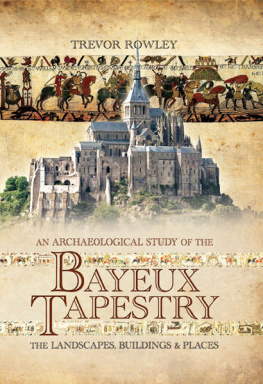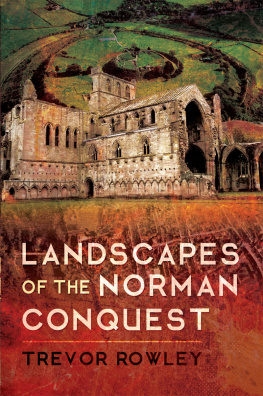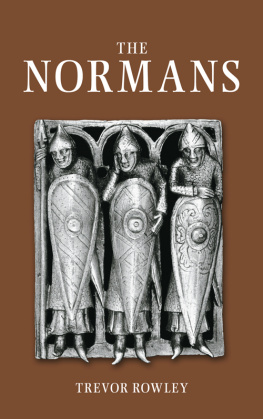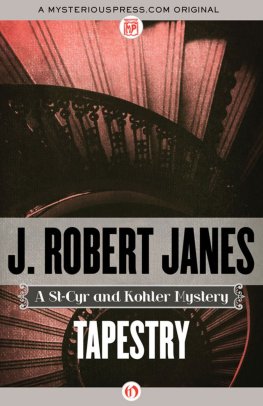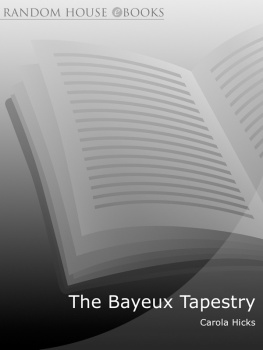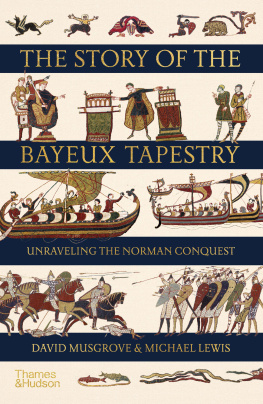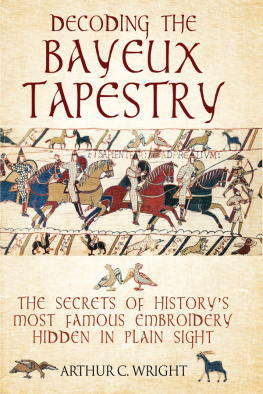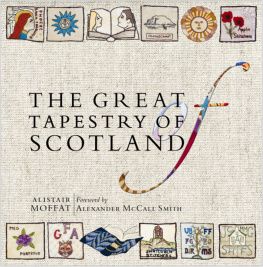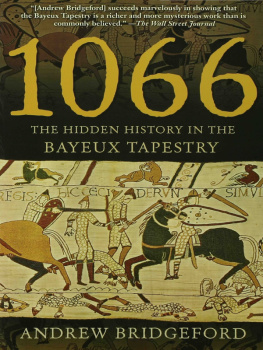Contents
Guide
Pagebreaks of the print version

First published in Great Britain in 2016 by
Pen & Sword Archaeology
an imprint of
Pen & Sword Books Ltd
47 Church Street
Barnsley
South Yorkshire
S70 2AS
Copyright Trevor Rowley 2016
ISBN 978 1 78159 380 6
PDF ISBN: 978 1 47387 448 0
EPUB ISBN: 978 1 47387 447 3
PRC ISBN: 978 1 47387 446 6
The right of Trevor Rowley to be identified as the Author of this Work has been asserted by him in accordance with the Copyright, Designs and Patents Act 1988.
A CIP catalogue record for this book is available from the British Library
All rights reserved. No part of this book may be reproduced or transmitted in any form or by any means, electronic or mechanical including photocopying, recording or by any information storage and retrieval system, without permission from the Publisher in writing.
Typeset in Ehrhardt by
Mac Style Ltd, Bridlington, East Yorkshire
Printed and bound by Replika Press Pvt. Ltd.
Pen & Sword Books Ltd incorporates the imprints of Pen & Sword Archaeology, Atlas, Aviation, Battleground, Discovery, Family History, History, Maritime, Military, Naval, Politics, Railways, Select, Transport, True Crime, and Fiction, Frontline Books, Leo Cooper, Praetorian Press, Seaforth Publishing and Wharncliffe.
For a complete list of Pen & Sword titles please contact
PEN & SWORD BOOKS LIMITED
47 Church Street, Barnsley, South Yorkshire, S70 2AS, England
E-mail:
Website: www.pen-and-sword.co.uk
Contents
Acknowledgements
I would like to thank all those people who have encouraged me in the writing of this book and have helped with information, ideas, typing, translation, editing, and cartography. Notably Martin Biddle, Linda Kent, Martin Henig, Maggie Kneen, Sylvie Lemangen, Michael Lewis, Gale Owen-Crocker, Jane Rowley and Richard Rowley. Needless to say any mistakes, omissions or misinterpretations belong to me alone.
I would also like to thank the city and people of Bayeux for permission to include the many reproductions from the Bayeux Tapestry.
This book is dedicated to my lovely wife, Jane.
Foreword
I n writing this book I have had the opportunity of combining two lifelong academic passions - the Normans and landscape history. I have interpreted archaeology in the title very broadly to include the historic landscape of the mid-eleventh century in England and North-western France. Some may be disappointed at the meagre representation of artifactual analysis, but I would point them towards the fine work of Michael Lewis and David Wilson amongst others. This book, I believe, represents one of the first attempts to explore the landscape setting in which the events depicted on the Bayeux Tapestry took place. For the most part the Tapestry provides topographic detail grudgingly, but it does give many pointers, which used with other sources helps us understand more fully the geography of Normandy and England in 1066.
As I have been writing a leitmotif has emerged in the form of the re-occurring importance of the classical legacy; both in the events surrounding 1066 and in the Tapestry itself. In the eleventh century a great deal more Roman masonry and carving would have been visible in northern Europe than is the case today and its influence on the Norman world seems to have been profound. The Norman rebuilding of England in the neo-classical Romanesque style was itself a form of colonialism reminiscent of Roman Britain. Also it has been recognized for some time that the design of many of the buildings on the Tapestry is based on contemporary illuminated manuscripts, whose origins date back to the Roman era. More recently surviving Roman figurative carving, such as that on Trajans Column in Rome, has been identified as an important source for some of the Tapestrys choreography. The Norman Conquest would have been played out in a landscape where Roman antiquities would have been a common sight. On the Tapestry only Pevensey is identified as a place where there was a surviving Roman fortress, but it is probable that Roman fortifications would also have been used at Dover, Rochester and elsewhere. Moreover, both armies would have used the decaying Roman road system wherever possible in England and in Normandy. As William the Conqueror consolidated his hold on England after the Battle of Hastings echoes of the Roman conquest of Britain a thousand years earlier seem to have both materially helped and inspired him.
Trevor Rowley
Appleton, June 1 2016
Introduction
T he Bayeux Tapestry is the greatest surviving historical chronicle from the Anglo-Norman era. As a large-scale picture of warfare at the close of the Anglo-Saxon era it stands alone, observed Frank Stenton, the doyen of Anglo-Saxon historians. But its ultimate distinction lies in the artists grasp of his theme, his skilful arrangement of contrasted scenes, his mastery of the technique of composition, and above all, the curious air of vitality that runs through the whole long work. The Bayeux Tapestry depicts a specific version of the Battle of Hastings in 1066 and the events leading up to it. Many of the principal characters involved in the conflict are shown and the Tapestry portrays Saxons and Normans of various ranks, secular and ecclesiastical, engaged in a range of military, political and ceremonial activities.
Over the years the Bayeux Tapestry has been the object of intense speculation. Its contents have been analysed from every conceivable point of view. When was it embroidered, where was it made, who was responsible for its production and how should its images and narrative be interpreted? These and many other questions have been directed towards the hanging, but it is an artefact which is rich in ambiguity at every level. Part of the joy of the Tapestry is that although it ostensibly tells the straightforward story of William the Conquerors successful invasion of England, on deeper examination it turns out to be anything but straightforward.
There is probably more of a consensus about when it was executed than any other aspect of its interpretation. Most scholars now believe that it was made within two decades of 1066, but at that point concord ends. There is a general agreement that the Tapestry was produced in England, probably at Canterbury, but some historians believe that it was created elsewhere in England or in France. William the Conquerors half brother Bishop Odo of Bayeux remains the leading contender for having sponsored the Tapestry, but there are many other candidates, both English and French. Recently it has been suggested that the Tapestry was not the responsibility of one individual at all, but a corporate production by the monks of St Augustines, Canterbury.
Traditionally, the story of the conquest of England as depicted by the Tapestry has been interpreted as Norman propaganda, largely following the narrative set out by the contemporary Norman chroniclers William of Poitiers (c.102090) and William of Jumiges (c.10001070). The Tapestry does appear to justify the Norman invasion, but it also acknowledges the valour of King Harold and the English defenders. Some scholars have suggested that the Tapestry is not a piece of Norman propaganda at all, but if analysed closely presents a balanced representation of events; others have gone further and claim that it carries a subversive English message. In reality, the Tapestry is capable of being interpreted in many ways and most scenes are ambiguous in some aspect of their meaning. For example, Was it made so that Normans could impress the subjugated foe? Or so that the English could flatter, yet secretly insult the victors?

